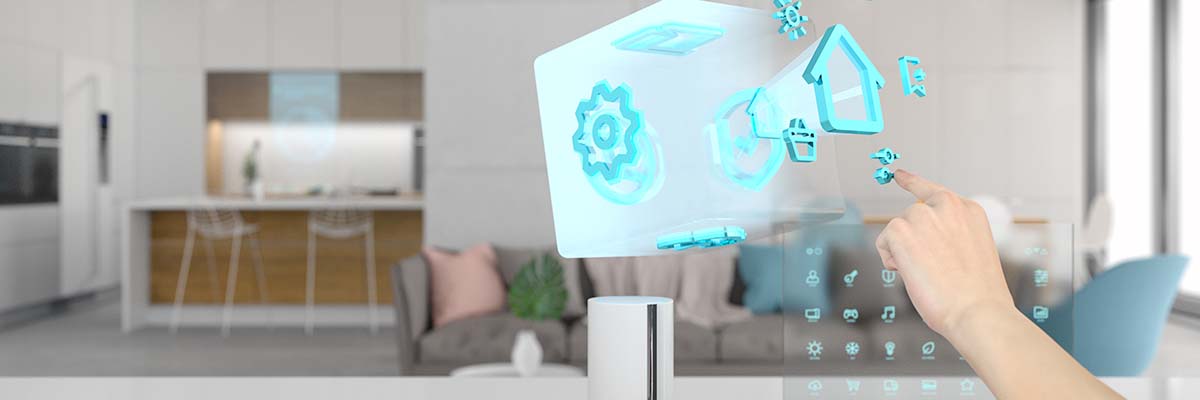What are smart buildings?
Smart technology is all around us, helping to streamline everyday living inside and outside our homes. From the name one must assume that smart buildings do something clever. So, what is a smart building? It is a connected building that integrates all energy sources for maximum efficiency and environmental benefit.
Over the years, the ability to control energy in the home has improved greatly. Smart homeowners can now select lighting, heating, security and air conditioning systems individually from one control panel – much like a home entertainment system. This enables homeowners to have more control over their home energy usage and manage it more efficiently.
Minimizing energy usage
With the focus currently on how excessive energy use is impacting the environment worldwide, both developers and homeowners are looking at lessening the impact of home energy usage. Of course, energy is essential in any home, but there are ways to minimize usage. This not only helps each homeowner with their finances, it also helps lessen a home’s environmental impact, thereby supporting a more robust electrical grid.
In-order-to meet strict environmental efficiency targets, it is not enough for buildings to simply contain a range of separate energy systems that provide light and heat, as they did in the past. Buildings that are designed now - and in the future - must have these systems connected in an integrated, functional and dynamic way.
Smart buildings are designed with the future in mind, with integration already built into their fabric. They are conceived to offer energy saving solutions from their initial design stage through to their use as homes or businesses. Energy efficiency is fully integrated into their lifecycle and they are designed to deliver energy at the lowest cost and environmental impact over this lifecycle.
How do smart buildings work?
So how are the energy systems integrated within a smart building? Their functionality operates by using information technology to connect a variety of energy subsystems. These systems can then share information to optimise performance within the building. Outside of the property, the building can be connected up to a smart power grid.
Integrated building automation will not only be commonplace in the homes of the future, but will also bring benefits to commercial and office buildings. Smart technology can improve the working environment, as well as the living environment. If workers use all the smart technology available in a building to facilitate their work, the functionality of an office environment is sure to improve.
These improvements in functionality will not only impact the workers, but also the managers of commercial buildings. In terms of energy management and efficient use of space, there are great leaps forward to be made. With climate and light being more easily controlled in a smart building, the objectives of being more efficient and lessening a building’s environmental impact can be achieved.
Practical benefits of smart buildings for facilities managers
How do smart buildings bring these benefits to a facilities manager in a practical way? Using the platform that controls the buildings heating and light systems, a facilities manager can connect the functions in a smart building with their own devices such as tablets and smartphones. This enables the facilities manager to control the buildings energy at the touch of a button, from wherever they are within the facility.
Several buildings can even be managed at once, with numerous building-related systems working together and communicating via an IP platform. Facilities management tasks can be achieved quickly and seamlessly using this integrated method. Making previously hard to coordinate tasks much easier, including cleaning duties.
Tasks that can be achieved include gaining insight into cleaning activities and receiving updates on areas that need to be cleaned. Facilities managers can also measure important environmental concerns such as air quality and waste flows. These insights will, over time, allow for lower operational and maintenance costs of buildings.
Smart buildings improve cleaning standards
With this new power in the hands of facilities managers, a key question is how will smart building technology help to improve the cleaning standards within buildings? The growth in the number of connected cleaning devices, that capitalize on the Internet of Things (IOT), is extraordinary. Data generated by smart sensors within these connected devices can be fed back to cleaning operatives and facilities managers, in-order-to streamline and improve cleaning routines.
As IOT is integrated into more and more cleaning devices, a digital ecosystem will be created that is powered by a network of connected devices. This will enable the cleaning and hygiene sector to move towards a new era of connectivity and efficiency, powered by the clever technology within the super smart buildings of the future.
More about smart buildings at Interclean Amsterdam
If you want to find out more about how the IOT and smart buildings are helping to improve standards within commercial cleaning, why not visit Interclean, the world’s leading show for cleaning and hygiene professionals. The Interclean show will be held at the RAI in Amsterdam from the 10th to the 13th of May 2022. To book your tickets visit www.intercleanshow.com/amsterdam/.
Receive industry news in your inbox
The cleaning and hygiene industry is on the move and the Interclean newsletter will inform you about what is happening in the industry on a monthly basis.






